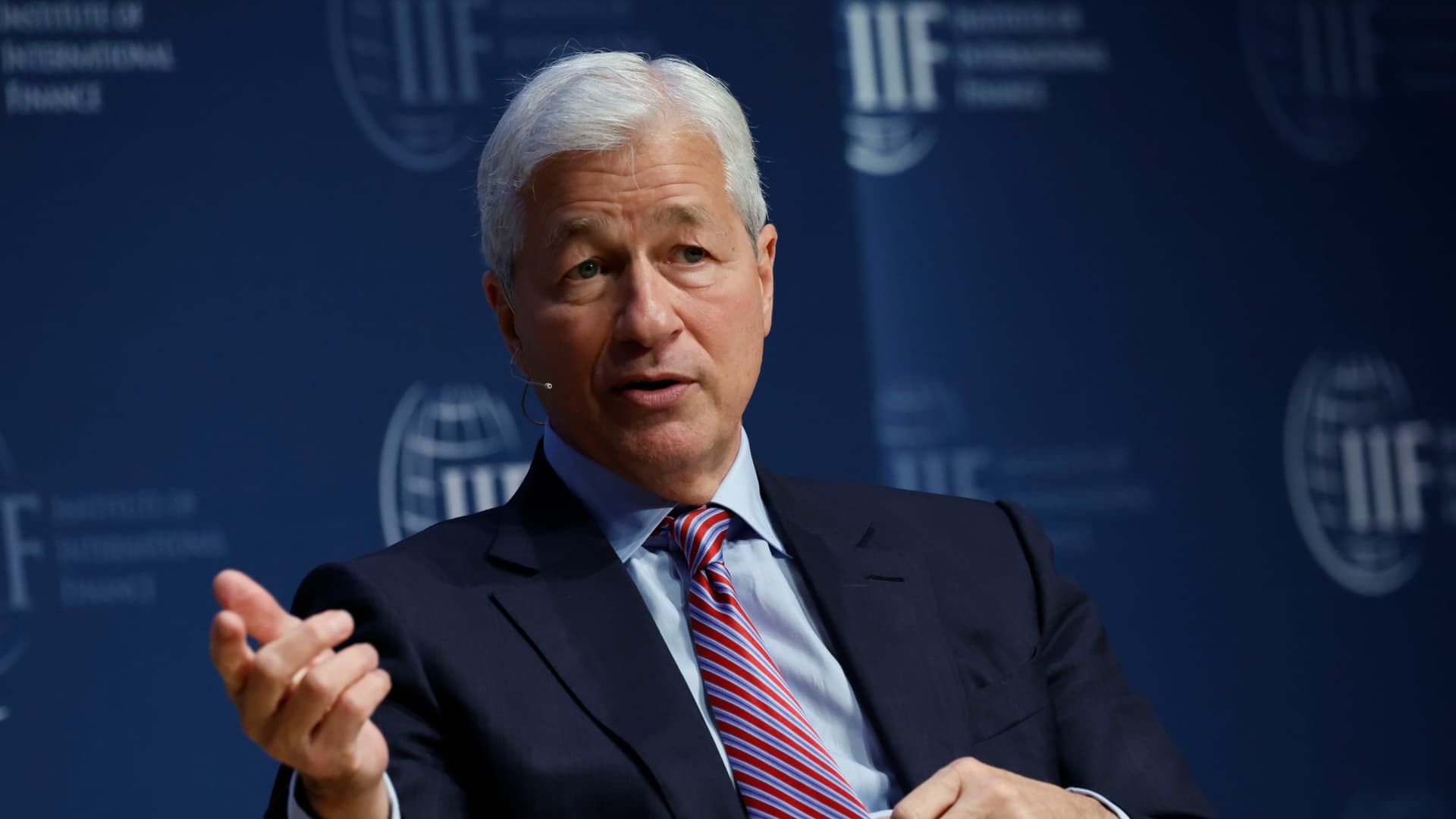JPMorgan Chase on Friday posted fourth-quarter profit and revenue that topped expectations as interest income at the bank surged 48% on higher rates and loan growth.
Here’s what the company reported:
related investing news
- Earnings of $3.57 per share which exceeds the $3.07 estimate after excluding one-time items, according to Refinitiv.
- Revenue of $35.57 billion vs. $34.3 billion estimate
The New York-based bank said profit jumped 6% from the year earlier period to $11.01 billion, or $3.57 per share. Revenue rose 17% to $35.57 billion, fueled by the rise in net interest income to $20.3 billion, topping the StreetAccount estimate by $1 billion, as the bank saw average loans rise 6%.
But the bank posted a $2.3 billion provision for credit losses in the quarter, a 49% increase from the third quarter that exceeded the $1.96 billion StreetAccount estimate, as it set aside money for expected defaults. The company’s shares rose 1.1%.
The move was driven by a “modest deterioration in the Firm’s macroeconomic outlook, now reflecting a mild recession in the central case” as well as loan growth from customers using their Chase credit cards, the bank said.
The recession, in which U.S. unemployment could reach 4.9%, is expected by JPMorgan economists to hit in the fourth quarter of this year, CFO Jeremy Barnum told reporters Friday in a media call.
The company’s jump in credit provisioning topped that of rival giants Bank of America and Wells Fargo, which each saw smaller increases in the quarter.
While JPMorgan CEO Jamie Dimon said Friday that the U.S. economy “currently remains strong” thanks to well-financed consumers and businesses, he pointed to a series of risks to that outlook.
“We still do not know the ultimate effect of the headwinds coming from geopolitical tensions including the war in Ukraine, the vulnerable state of energy and food supplies, persistent inflation that is eroding purchasing power and has pushed interest rates higher, and the unprecedented quantitative tightening,” Dimon said.
Quantitative tightening refers to central banks’ moves to shrink their balance sheets by halting or reversing previous bond-buying programs.
JPMorgan, the biggest U.S. bank by assets, is closely watched for clues on how the industry is navigating an economy at a crossroads.
Analysts expected a mixed bag of conflicting trends from banks. Higher rates help lenders earn more interest income, but some of that boost was offset by bigger provisions for expected loan losses as the economy slows.
JPMorgan gave some muted guidance for 2023, saying that it expects about $73 billion in net interest income, which implies a decline from levels in the fourth quarter of 2022. And the bank said that expenses will reach about $81 billion this year, up from $75.9 billion in 2022, because of wage inflation, hiring plans and investments in technology.
When pressed about the bank’s ill-fated acquisition of college financial planning platform Frank, Dimon defended his bank’s record on technology spending, but acknowledged it was a “huge mistake.”
Dimon rattled markets last year when he said an economic “hurricane” caused by the Federal Reserve was headed for the U.S. He declined to update his forecast in a media call on Friday.
Shares of JPMorgan have climbed 4% this year before Friday, compared with the 6% rise of the KBW Bank Index.
The other large retail banks, including Bank of America, Wells Fargo and Citigroup, also released results Friday, while Goldman Sachs and Morgan Stanley are scheduled to report Tuesday.


